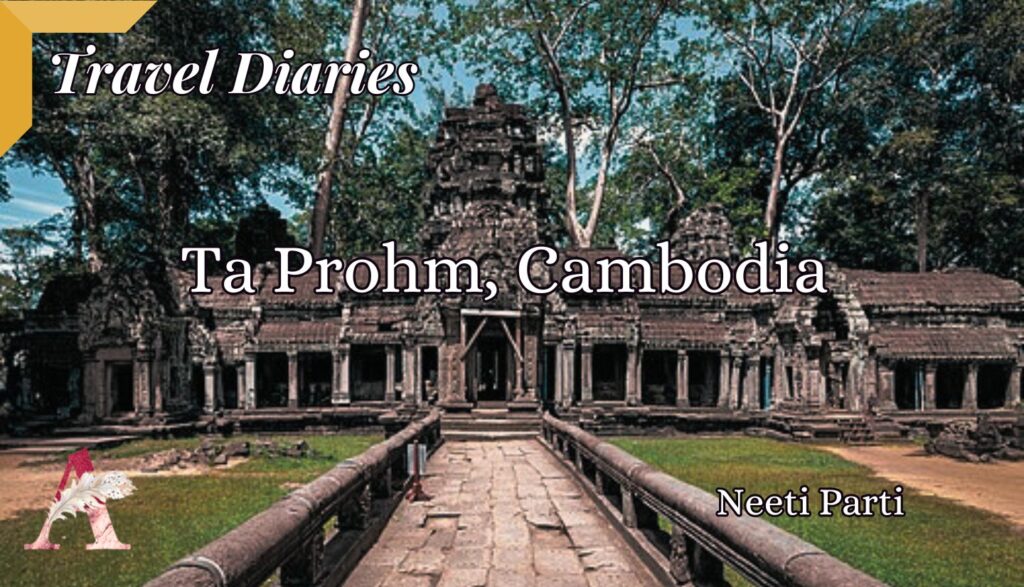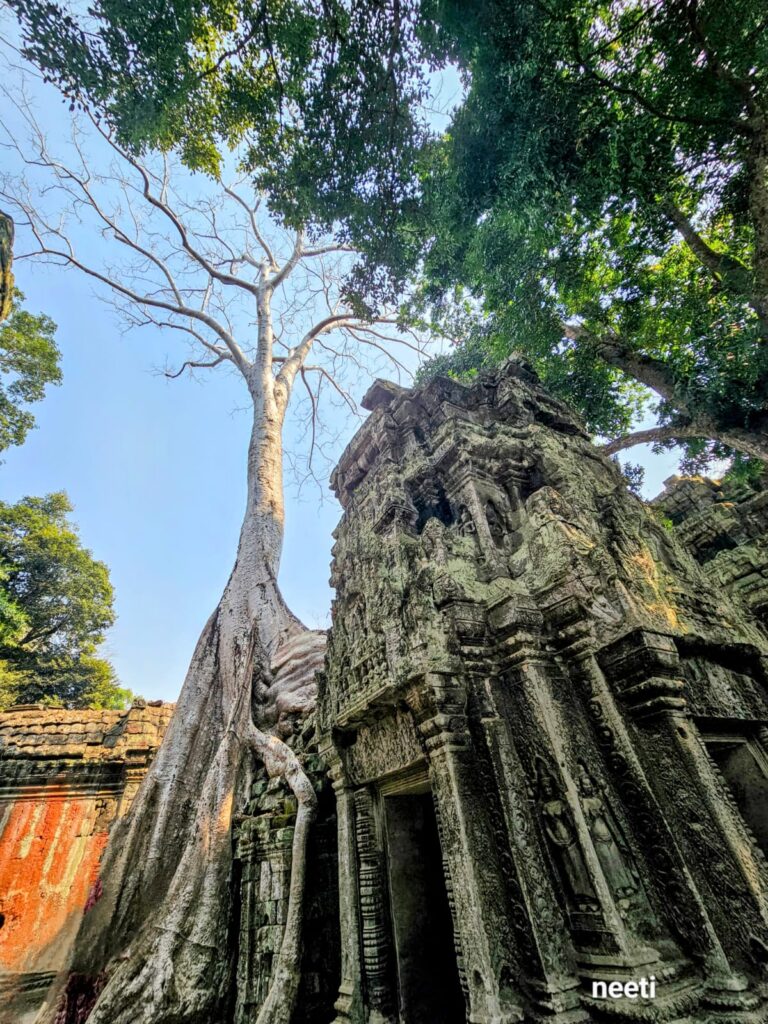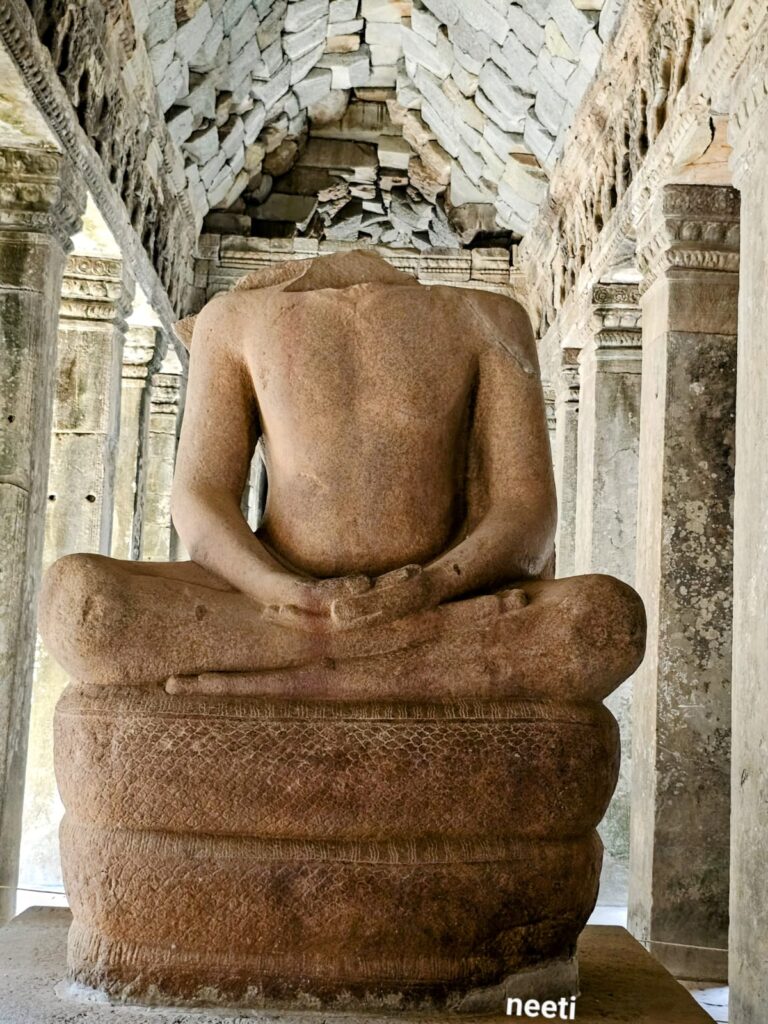
Angkor scholar Maurice Glaize observed, “On every side, in fantastic over-scale, the trunks of the silk-cotton trees soar skywards under a shadowy green canopy, their long spreading skirts trailing the ground and their endless roots coiling more like reptiles than plants.”
Introduction
Ta Prohm temple, literally meaning, ‘Ancestor Brahma’, is popularly known as the ‘Tomb Raider Temple’ or the ‘Angelina Jolie Temple’ as it has been depicted in the film, ‘Lara Croft: The Tomb Raider.’

The temple was built without mortar and, after it was abandoned, trees took root in the loosened stones. The trees growing out of the ruins and the jungle surroundings have made it one of the most popular temples with visitors to the area. It has been on the UNESCO World Heritage List since 1992.

According to research, there are more than 150 species of trees in the temple complex with the most common being the Sponge Tree or the silk-cotton tree that is often seen wrapping itself around and growing out of the structures.
History of Ta Prohm
Ta Prohm is an ancient Buddhist monastic complex. It was constructed in 1186 AD under the reign of the Khmer King, Jayavarman VII. The Khmer Empire was a SE Asian Buddhist-Hindu empire centred around hydraulic (water monopoly) Cambodian cities.
Ta Prohm, originally called Rajavihara, was constructed by Jayavarman VII in honour of his family. It was constructed to be a royal monastery and citadel. The temple’s main image, Prajnaparamita from Mahayana Buddhism referred to the perfected way of seeing the nature of reality and the personification of wisdom. It represented the king’s mother.
The northern and southern satellite temples were dedicated to the king’s guru, Jayamangalartha, and his elder brother respectively.
While Ta Prohm’s construction is undoubtedly attributed to King Jayavarman VII, researchers speculate on the existing structure at the site and that the site may have had additions or even been completed in the eras following the king.
The Abandonment of Ta Prohm
The Royal elite and king of the time moved the capital away from Angkor sometime around the fifteenth century. The reasons for abandoning Angkor and its temples vary, with most researchers agreeing to the possible combination of attacks from foreign forces, economic advantages of moving the capital, and climate issues.
The site was first cleared by Henri Marchal of ‘The École Française d’Extrême-Orient’ in 1920. The École Française d’Extrême-Orient or The French School of the Far East dedicated to the study of Asian societies chose to leave the site unrestored and limited its work to clearance and maintenance.
Role of Archaeological Survey of India (ASI) in restoration of Ta Prohm
Since 2004, the Ta Prohm temple restoration project has been led by the Archaeological Survey of India (ASI). They have undertaken major studies on hydrology, botanical, geotechnical, structural, material and so forth at the site, leading to solving the major issue of flooding at the site, restoration of the third enclosure on the southeast side, restoration of the western causeway and fourth enclosure, laterite walls and the nearly complete restoration of the Hall of Dancers.

The restoration of the Hall of Dancers is an epic in itself, now spanning over ten years. ASI comprehensively analysed, deconstructed and re-established the laterite plinth base structure and foundation. The reconstruction done stone by stone is truly a wonder!
During restoration, the ASI team made several discoveries, including part of a gold crown. They also unearthed two Buddha Muchalinda statues. Muchalinda, the serpent king, is a significant figure in Buddhist mythology, known for protecting Gautama Buddha from the evils after his enlightenment. The statues, one small and one large, were located within the Hall of the Dancers. The larger statue is sadly missing the head.

Ta Prohm is an intricate blend of nature and architecture which makes it a ‘must-visit’ destination for avid travellers and history enthusiasts alike.
Neeti Parti
